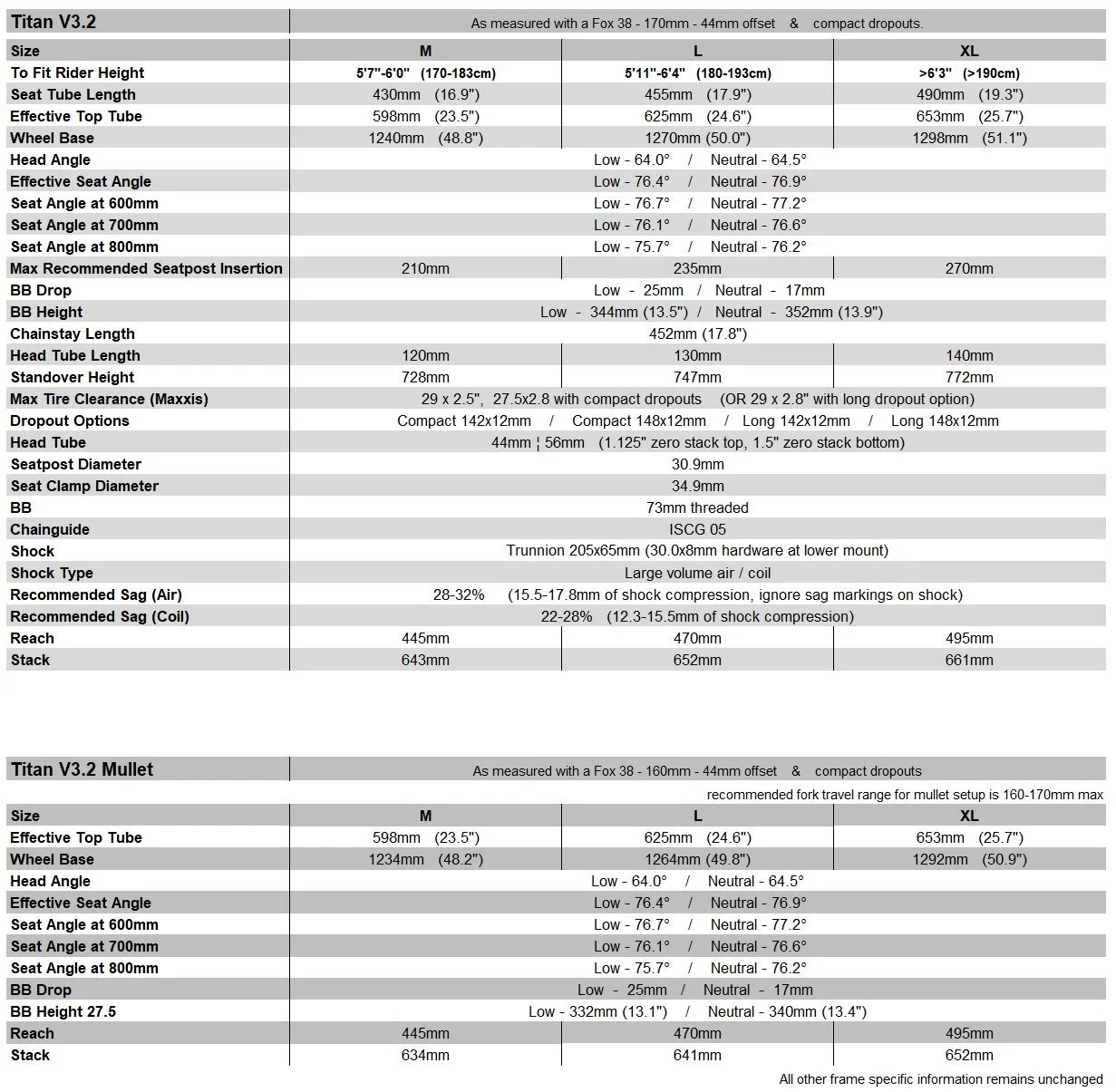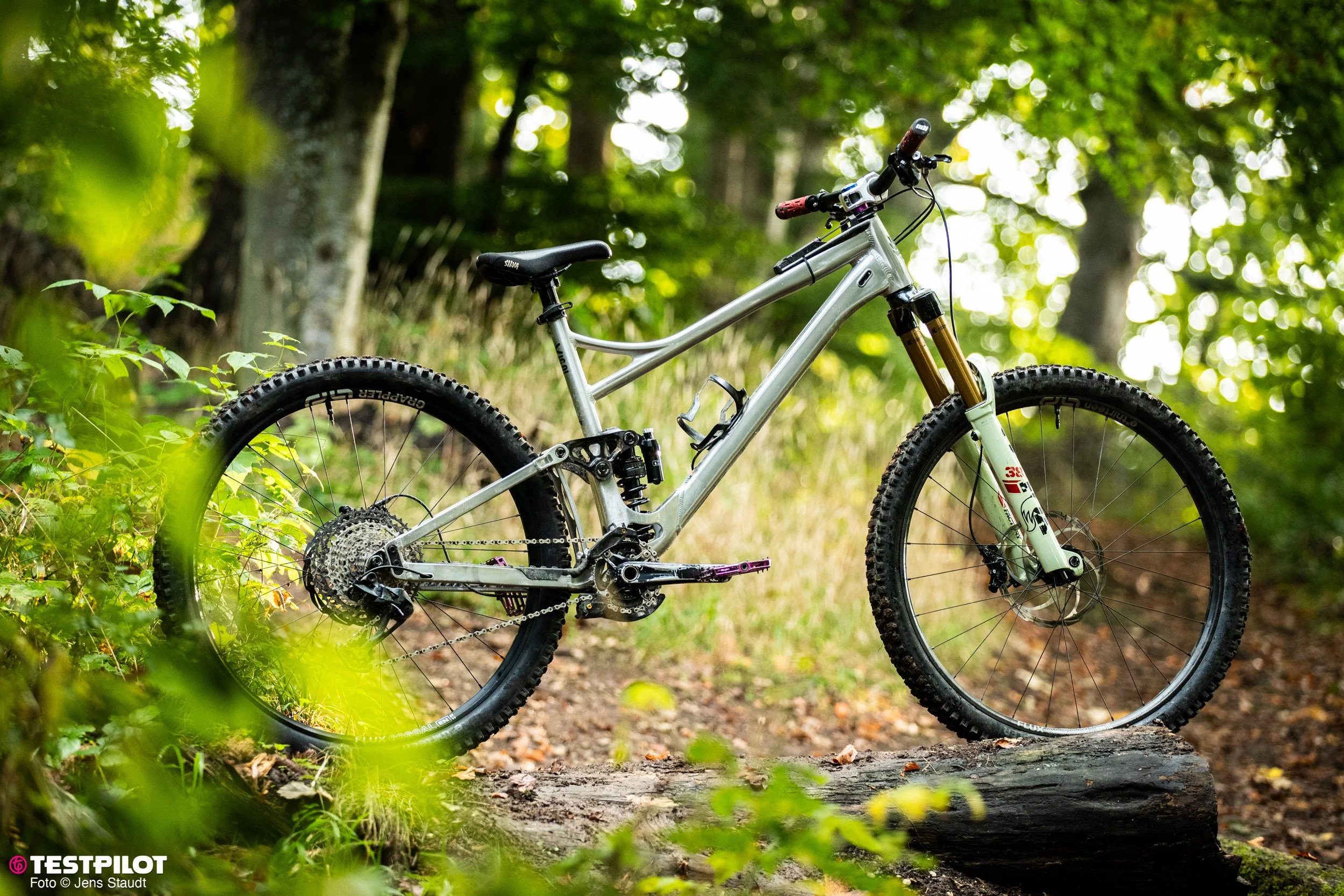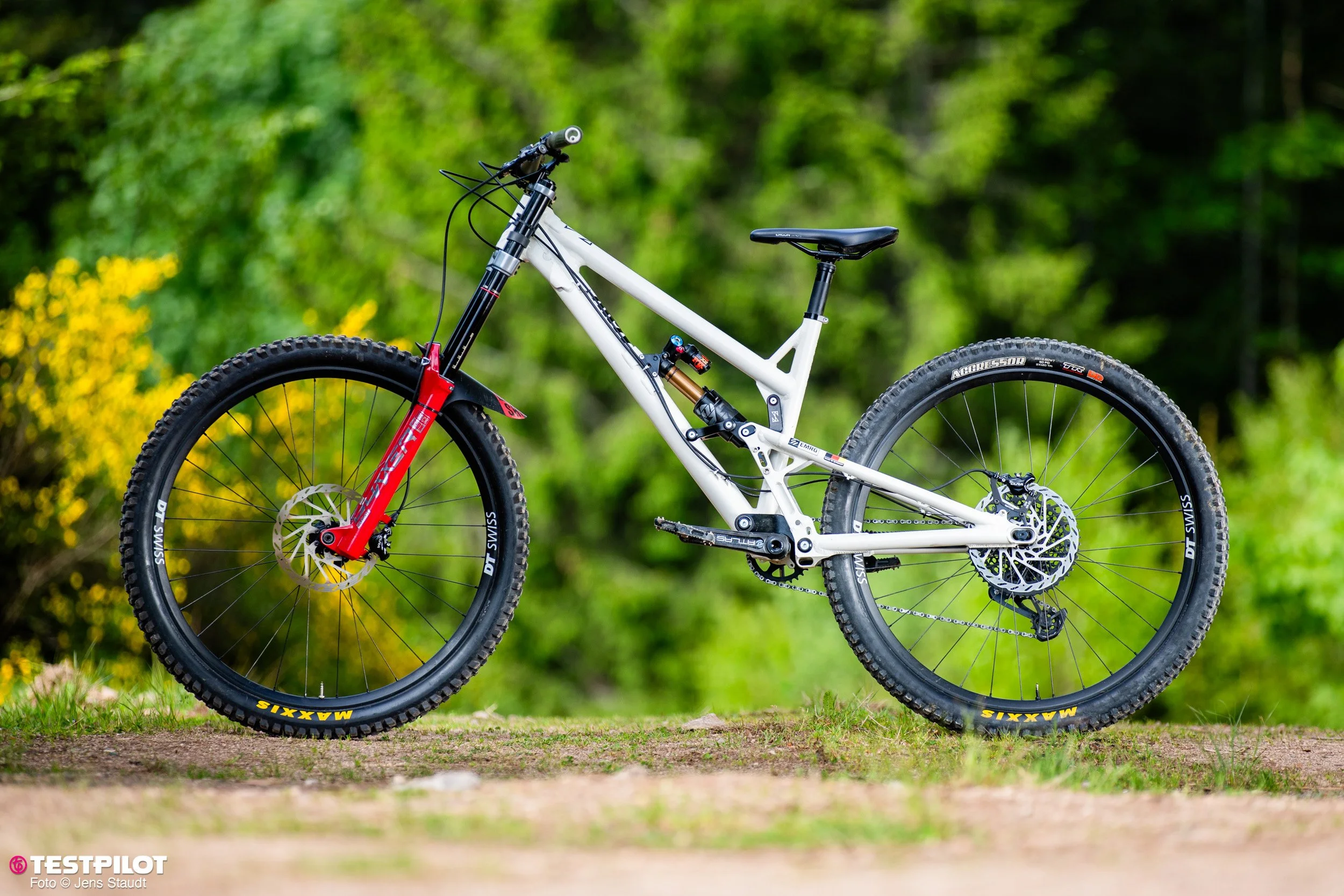Review Banshee Titan – OH my word!
Lesezeit: 7–8 Minuten
Some brands shout, others whisper—and that's precisely where their strength lies.
No aggressive social media campaigns, no ad banners tracking you across every platform. Instead, hidden almost in plain sight, there’s a bike that doesn’t look mainstream—and doesn’t ride like it either.
Banshee is one of those brands. And what they’ve got in their lineup isn’t just more budget-friendly than much of the competition—it's also a real breath of fresh air in the sea of carbon spaceships.
The name? Titan. A tool. For those bold enough to use it. Enjoy a bike test that breaks free from category thinking. If you’re not up for a deep dive, you can skip straight to the riding impression.
Where to ride it?
A bike is more than just numbers for geometry and travel. Yet we often think we can judge a bike by its head angle, chainstay length, and seat tube angle. Unfortunately, that view falls short—and the Banshee Titan is a perfect example of why.
The current version, 3.2, was introduced back in March 2022, which—in an industry that loves to outpace itself—almost makes it seem like "old news." But once again, that assumption couldn’t be more wrong.
AllMountain or Enduro? Terms which may mislead you.
Banshee categorizes the Titan as a bike built for everything from all-mountain to enduro. While we mountain bikers have developed a fairly clear idea of what kind of travel an enduro bike should have, the term “all-mountain” has never really been clearly defined or widely adopted. A bike for the whole mountain? Just a mountain bike that climbs and descends?
Let’s take a look at the typical key specs of an enduro bike and see how they might translate to an all-mountain setup.
Bike-Spec
| Spec | Enduro | Allmountain |
|---|---|---|
| Headangle | ca. 64° | ca. 66° |
| Chainstay | 440-450 mm | 435-445 mm |
| Seatangle | 78° | 77° |
| Travel | 170/160 mm | 160/150 mm |
It used to be a given that bikes with less travel should also have steeper head angles. This results in better maneuverability at lower speeds and in technical terrain. Moreover, the steering doesn’t “fold in” as much, which means you end up making fewer corrective movements.
Enduro = “Getting up there, but mainly to go down”
The kind of bike that still gets you up the mountain without draining your last bit of energy—and gives you tons of confidence and capability on the way down, even in the roughest terrain. For years, enduro racing has been the proving ground for what these bikes are capable of. And that’s been confirmed by us riders: enduro bikes have largely replaced downhill and freeride bikes in bike parks. For most people, an enduro is all they really need to have a blast on the descents.
AllMountain = “Literally all of the mountain”
Does the term mean you're supposed to fully enjoy both the climb and the descent? All under your own power? Equal parts fun? If that’s the case, wouldn’t enduro be more like 40/60 instead of 50/50?
And what tires are you supposed to run on an all-mountain bike anyway? You’re basically just making life harder for yourself—the bike can’t quite keep up with a full-blown enduro on the way down, and on the way up, it’s not that much better either…
You can probably tell—this is the kind of debate that can go on for hours over a post-ride beer.
At the end of the day, it’s all just splitting hairs — and that’s exactly where the Banshee Titan comes in. The Titan is open to your interpretation.
But if we’re being honest with ourselves, we have to admit that the lines between categories have become pretty blurry. You can absolutely ride a bike with less travel seriously fast through rough terrain. Truly extreme outliers in geometry are rare these days. What matters is what works for you and matches your personal preferences.
That’s why most geometry charts in the mainstream now feel fairly interchangeable—and it creates a false sense of certainty that we know what the “right” numbers are for reach, head angle, and chainstay length.
Defining a category – Banshee Style
At first glance at the geometry chart, one number is sure to catch the eye of any bike nerd: the chainstay length. 452 mm in the “short” setting—and there’s even a 462 mm option.
While opinions on chainstay length—and the philosophies behind whether they should be short or long, and what “short” or “long” even means—are more divided than the debate over whether e-biking still counts as a sport, Banshee seems to take a different approach: they let the rider decide.
Fourhundredsixtytwo — have we all been brainwashed by years of marketing telling us that only short chainstays are agile?
462 in the long setting... is there any other brand out there offering something like that? But Banshee doesn’t stop there—the Titan has even more to offer. It’s a truly versatile platform. And here’s what they have to say about their own creation:
The Banshee Titan V3.2 is the rider's choice, refined. A no-compromise frame designed to tackle big enduro days. The Titan has adjustable geometry, and the ability to run either full 29” or mullet setups to perfectly suit your riding style.
The famous Banshee ride quality is supported by the Titan’s balanced geometry, weight distribution and tuned frame stiffness. Traction and control are achieved at all speeds due to low leverage ratios and optimized leverage curves working through a zero friction linkage. The result is a frame that punches above its 155mm travel number, with incredible suppleness, great mid stroke support, and a bottomless feel enabling you to ride faster and further.
Banshee’s commitment to frame quality and performance above all else means that the harder you ride the Titan the better it performs, so get off the brakes and have fun.
– Banshee Bikes
We’ve summarized all the options for you in the table below. The dropouts are designed so that length is the only thing that changes. On top of that, you can mount them in either a high or low position:
| Travel | CSL | Setting | HA | BB-Drop | SA |
|---|---|---|---|---|---|
| 170 / 157 mm | 462 mm | LOW-Setting | 64° | 25 mm | 75,7° |
| 170 / 157 mm | 462 mm | HIGH-Setting | 64,5° | 17 mm | 76,2° |
| 170 / 155 mm | 452 mm | LOW-Setting | 64° | 25 mm | 75,7° |
| 170 / 155 mm | 452 mm | HIGH-Setting | 64,5° | 17 mm | 76,2° |
| 160 / 157 mm | 462 mm | LOW-Setting | 64° | 25 mm | 75,7° |
| 160 / 157 mm | 462 mm | HIGH-Setting | 64,5° | 17 mm | 76,2° |
| 160 / 155 mm | 452 mm | LOW-Setting | 64° | 25 mm | 75,7° |
| 160 / 155 mm | 452 mm | HIGH-Setting | 64,5° | 17 mm | 76,2° |
Side note:
The reach numbers for the Titan might seem relatively short on the spec sheet, especially combined with the long chainstays. But don’t be fooled here. The stack height on the Banshee is also quite tall. Since reach is measured from the top of the head tube, having a tall stack usually means you don’t need a spacer stack to raise the handlebar. That way, less “reach gets eaten up” because the bar isn’t pushed towards you.
Frame details
| Intended use | AllMountain / Enduro |
| Sizes | M, L, XL (tested size was XL) |
| Frame travel | 155 mm with the short or 157 mm with the long dropouts |
| Recommended travel front | 160 – 180 mm (Single Crown only) |
| Wheelsizes | 29×2.5", 27.5×2.8" (Compact Dropouts) or 29×2.8" (Long Dropouts) |
| Frame material | 7005 T6 (7075 T6 Links and Hardware) |
| Weight | 3.95 KG (8.7 lbs) Medium Black Anodized Frame – inkl. Float X2 shock, Dropouts with axle and seatclamp |
| Price |
UVP: € 2399 IM SALE: € 1799 MSRP: $2699US ON SALE: $1699US |
| Anmerkungen |
Prices may vary by country. Ask your local dealer. Frameset comes with:
|
It is tight and your choice might be narrow
If you’re looking for a hair in the soup, one point to mention is that the space for the shock is quite limited. While we didn’t encounter any issues during testing, it’s important to pay attention to the list of incompatible shocks. Some simply won’t fit in the frame because their dimensions—often due to the reservoir—would cause interference.
Shock Incompatibility: Fox Live Valve shocks, Push HyperCoil springs, DVO Jade X / Topaz 2 and 3, Suntour TriAir2, Marzocchi Bomber Air and FAST Fenix 1.0 (2.0 is compatible) are not compatible with this frame model. The Manitou Mara Pro requires the short reservoir option, and side knob climb switch.
Side note: What happens if you increase the chainstay length?
When you lengthen the chainstay, the suspension travel increases as well. Banshee offers a 10 mm adjustment range on the Titan. However, calculating the exact difference (Δ) isn’t as straightforward as it seems.
Based on chainstay length and shock stroke, you’d expect 158 mm of travel—assuming a single-pivot design. But with its additional linkages, the Titan actually provides 157 mm of travel.
Long chainstays. 170 mm up front. 157 mm in the rear. Business.
You might be happy to find out the increased room with 462 mm: Tire clearance up to 2.8 in 27.5 and blocking a rear wheel with mud is a thing of the past.
Banshee Titan review
If you want to make things easier on the climb, you can optimize just about any bike: lightweight wheels, fast-rolling tires, a low overall weight for better agility… Maybe that’s a bit how we here in Europe interpret the all-mountain category?
We’d argue that this kind of setup isn’t exactly what Banshee is aiming for. Our custom build still rolled on enduro-casing tires and lightweight wheels. The Titan becomes a rocket on the climbs—at least until you shred the sidewall of your tire. So it’s definitely worth considering whether to ride the Titan without restricting your throttle.
The riding position is comfortably upright, without expecting uphill PRs. It gets the job done. No noticeable bobbing, no annoying fuss on the way up.
If you love technical climbs, you might need to adjust your timing a bit with the long chainstay option. The rear wheel hits obstacles slightly later if you’re used to shorter stays. But that’s something you get used to pretty quickly.
Banshee’s commitment to frame quality and performance above all else means that the harder you ride the Titan the better it performs, so get off the brakes and have fun. – Banshee
At the top, you take in the view and catch your breath—the Titan stretches out and comes alive. A pedal stroke, and it becomes clear the name promises greatness, not sluggishness. What felt relaxed on the climb turns into a frenzy on the way down. Suddenly, you need to be sharp—not because you’re on an uncontrollable wild mustang, but because you’re getting fast faster than you thought possible.
Do you know that feeling when a tool just fits perfectly in your hand and suddenly every task is easier? That’s precisely how the Titan rides. The balance is impressive—every steering input translates with precision. And that note on Banshee’s site, saying the Titan rides better the harder you push it? It’s true. So very true!
While keyboard engineers are still busy explaining why long chainstays supposedly make a bike sluggish, you’re already blasting through the first three rock gardens with unnerving ease. A quick compression into the suspension. Let it pop back out, lighten up, float, search for grip. KABOOM—this rock came too fast. Focus! At this speed, you feel every flex in your wheels and fork. The frame is working—not just the suspension, but laterally too. Is that bad? Quite the opposite. It helps you hold your line. Are there compromises? Not for you. You take no prisoners.
If you’re ready to put your trust in the Titan, you’ll be rewarded. But be prepared to accept the trade-off: you will get speed. Lots of speed. Even familiar trails suddenly feel new. Jumps feel too short, corners come up sooner, and yes—a full-face helmet is definitely not a bad idea for this bike.
If you’ve decided upfront to go with enduro casings and lightweight wheels, you’ll find yourself stopping on the track more often to check if the rim is still intact. Pro tip: Be a good boy and eat that extra bowl of oats in the morning, slap on some DH tires, and treat yourself to an insert in the rear.
That the Titan has less than 160 millimeters of travel in the rear feels almost laughable once you see how hard it hammers down the mountain.
And while you’re still thinking about how you managed that one crazy line against all odds, suddenly your buddy—the one who actually started ahead of you—rolls up beside you.
“How are you already down here?”
“No idea.”
You are puzzled, and your eyes scan the top tube. TITAN.
He stays silent. Until the next run.
Travel up front and chainstay length
In our test, we tried both chainstay length options.
Jens ultimately prioritized the “long” or rather “longer” and “low” setup. The different dropouts are secured with two bolts each and can also be adjusted in height.
If you want to go extra crazy, you may use an offset bushing on the shock for even more descending madness.
We rode the Titan with both 160 mm and 170 mm forks, and we’d recommend pairing the longer bike with a longer fork. In this case, “longer” means 170 mm of travel.
If you prefer a more compact bike, the frame with the short dropouts and a 160 mm fork can help take some of the edge off.
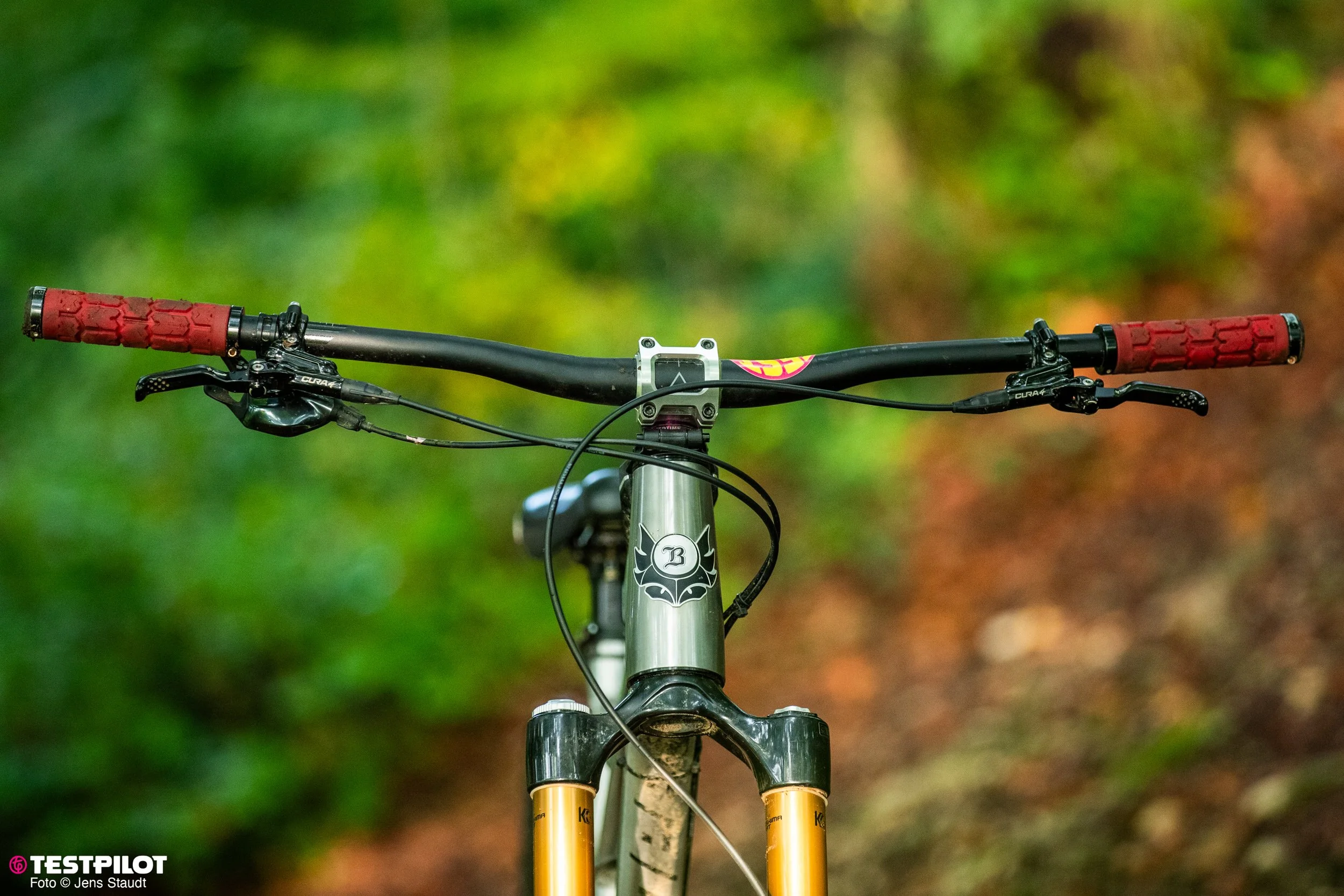
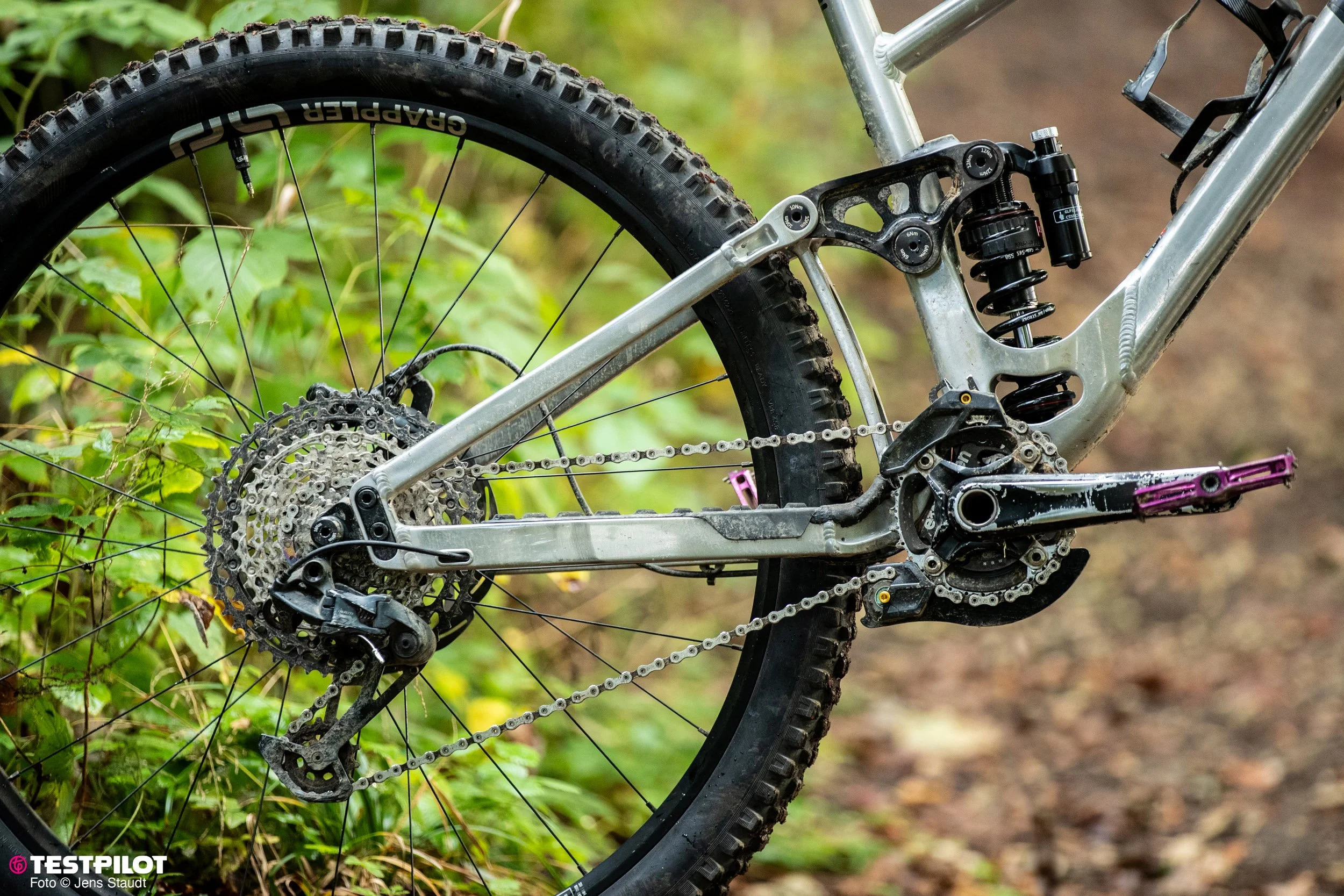
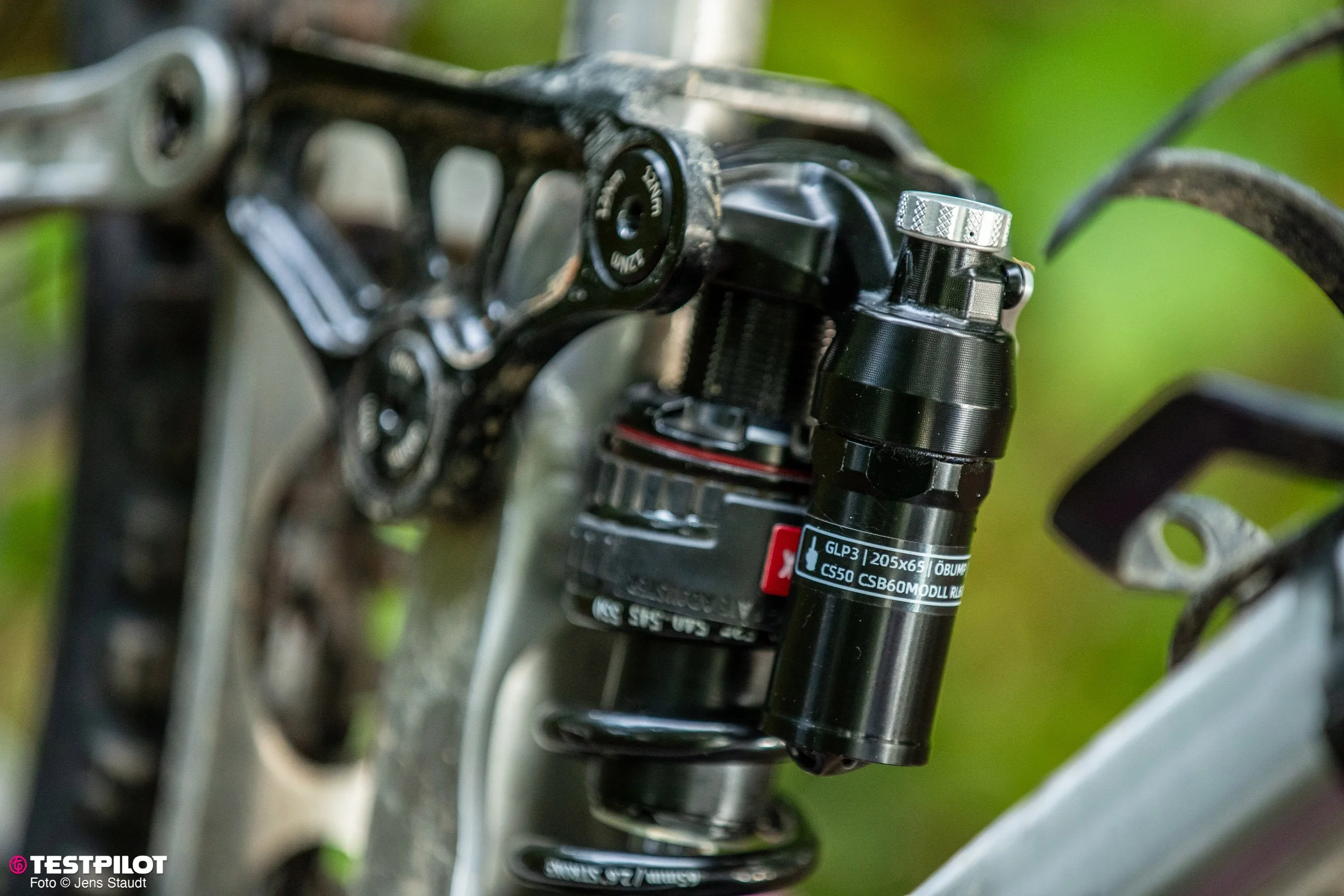
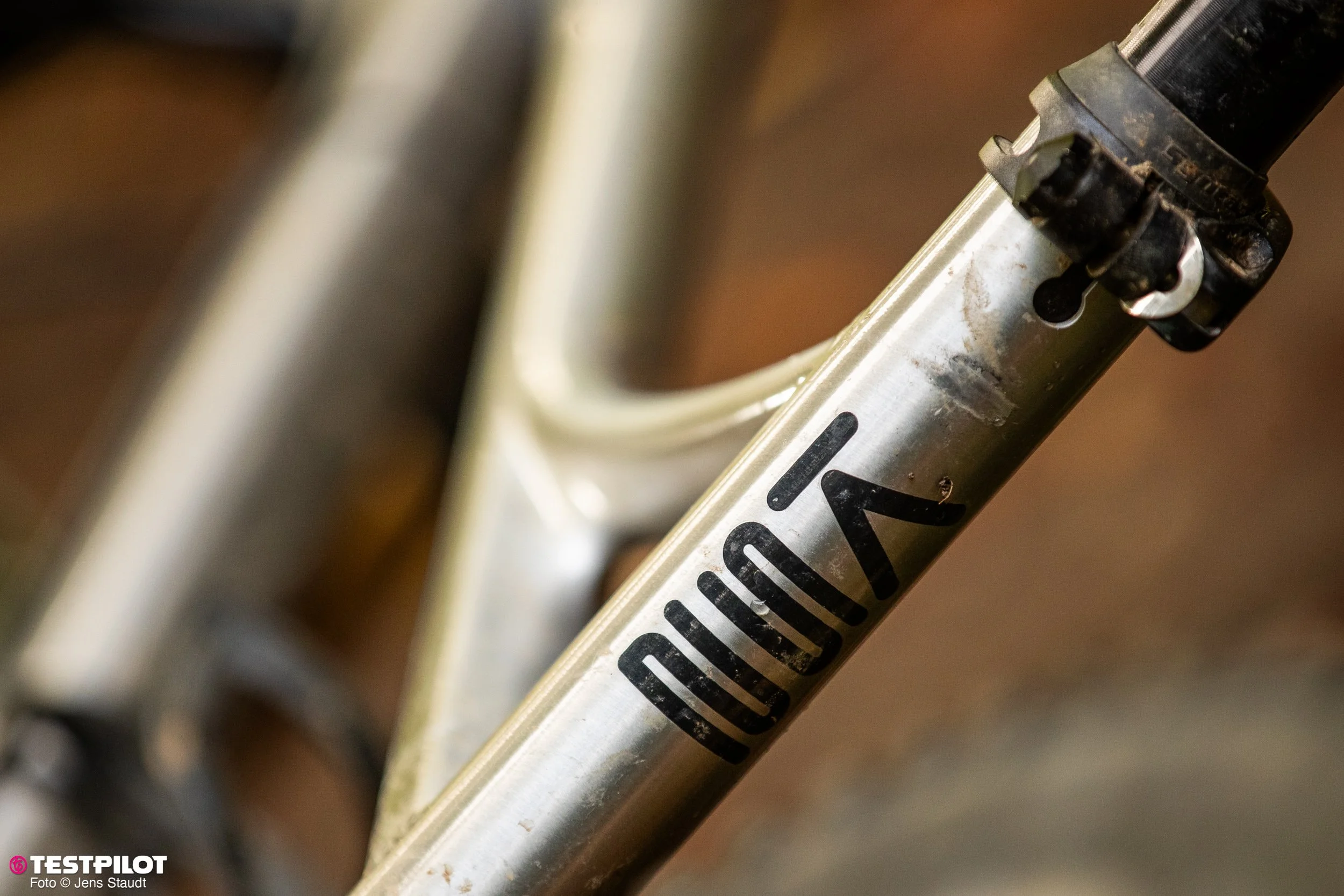
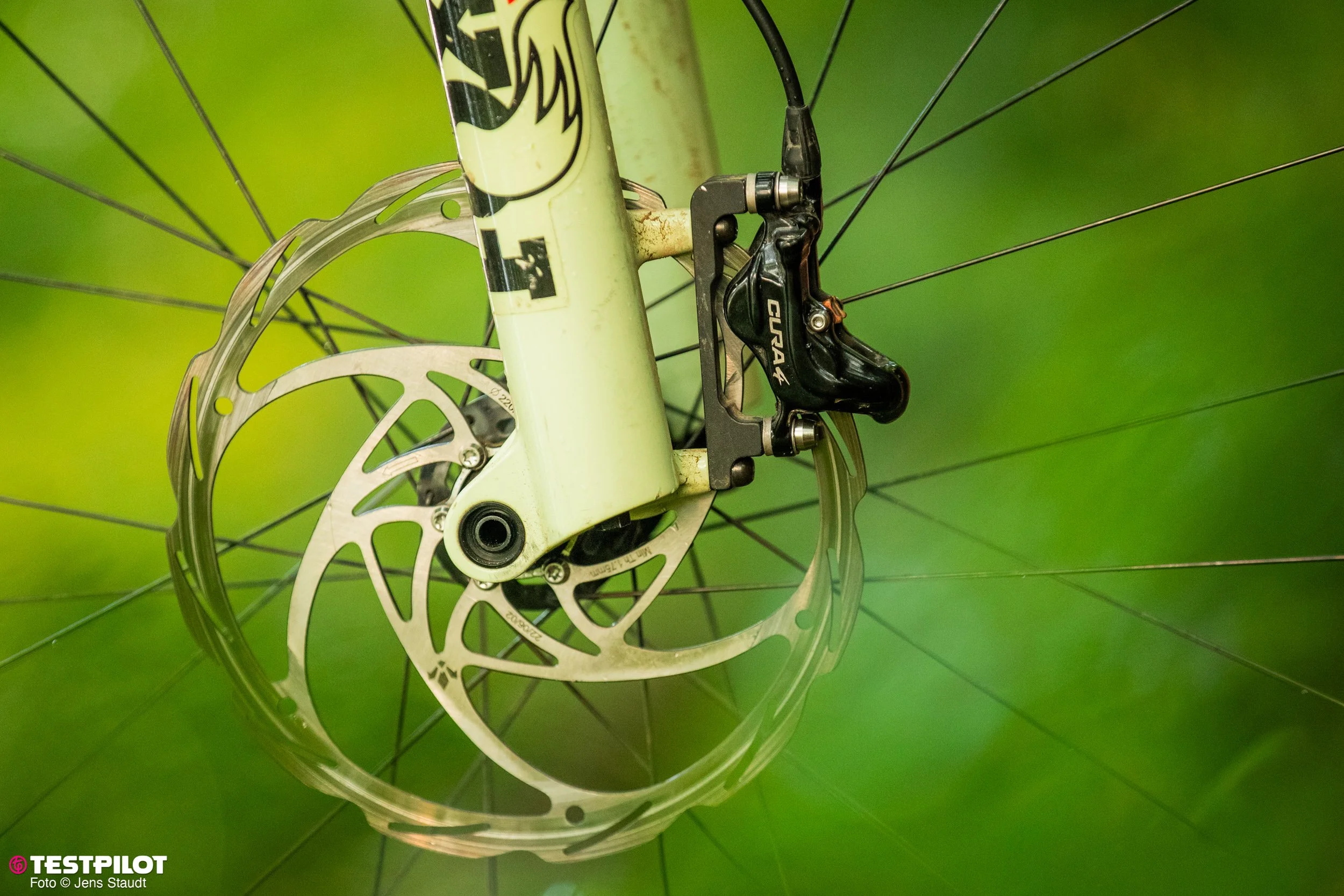
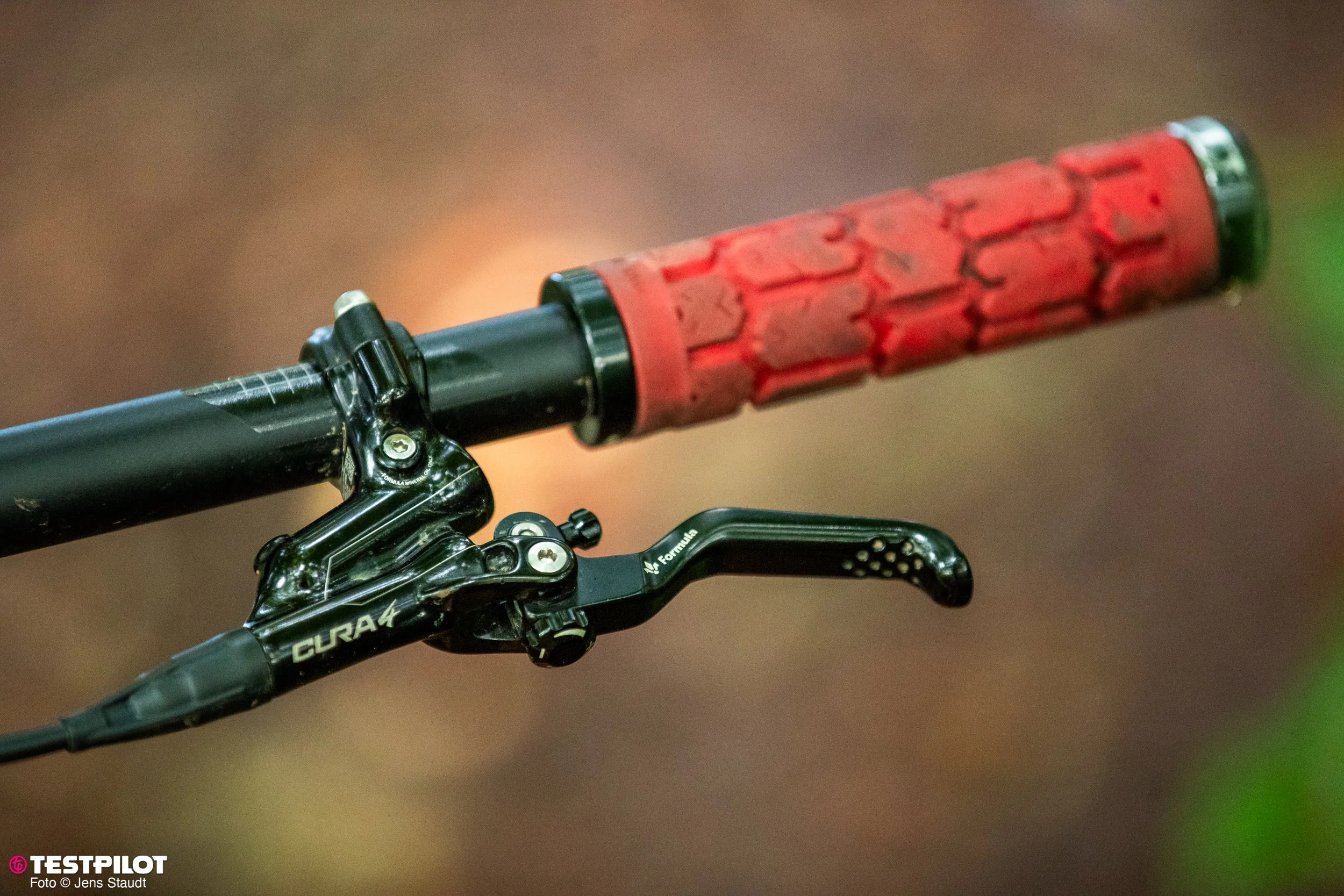
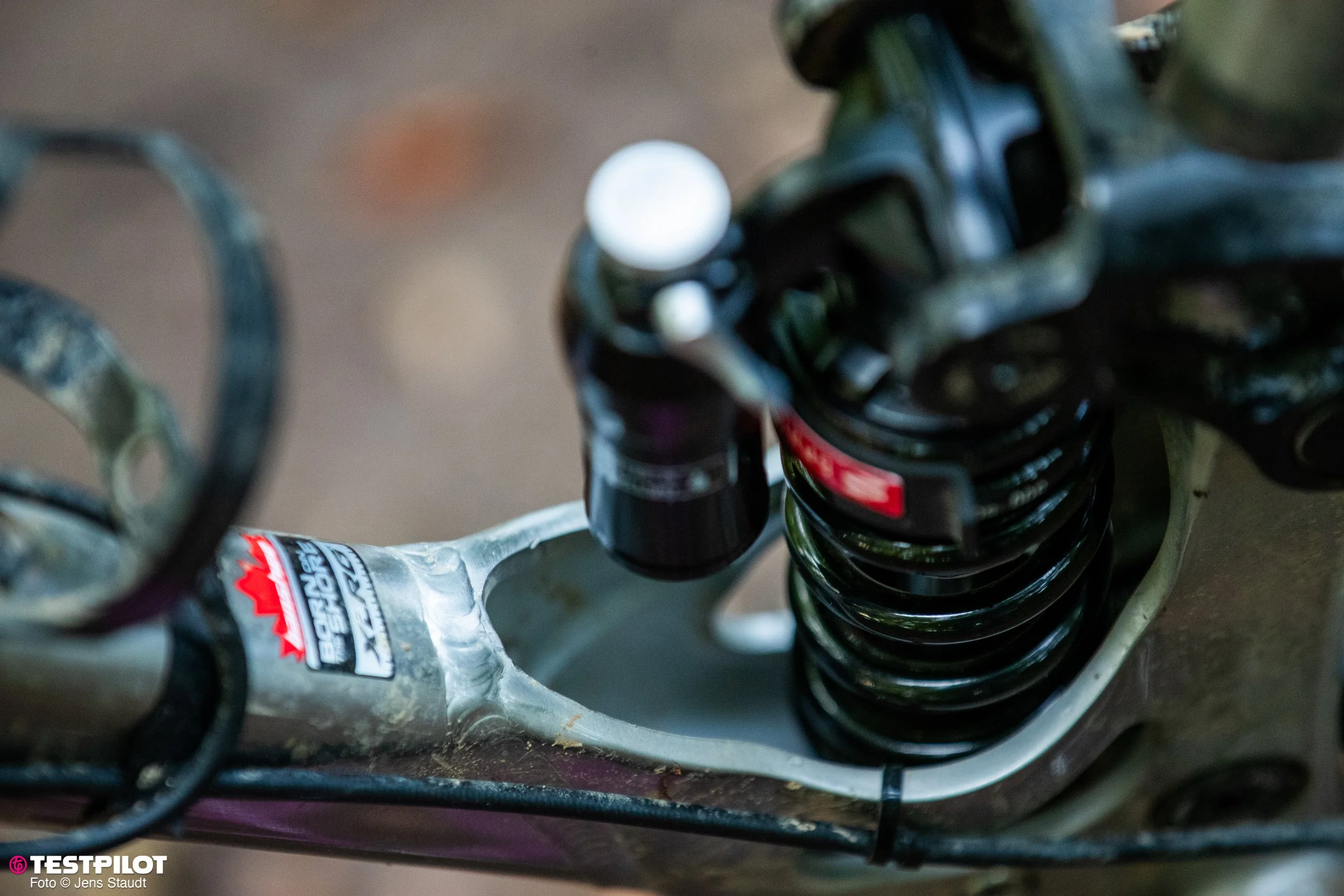
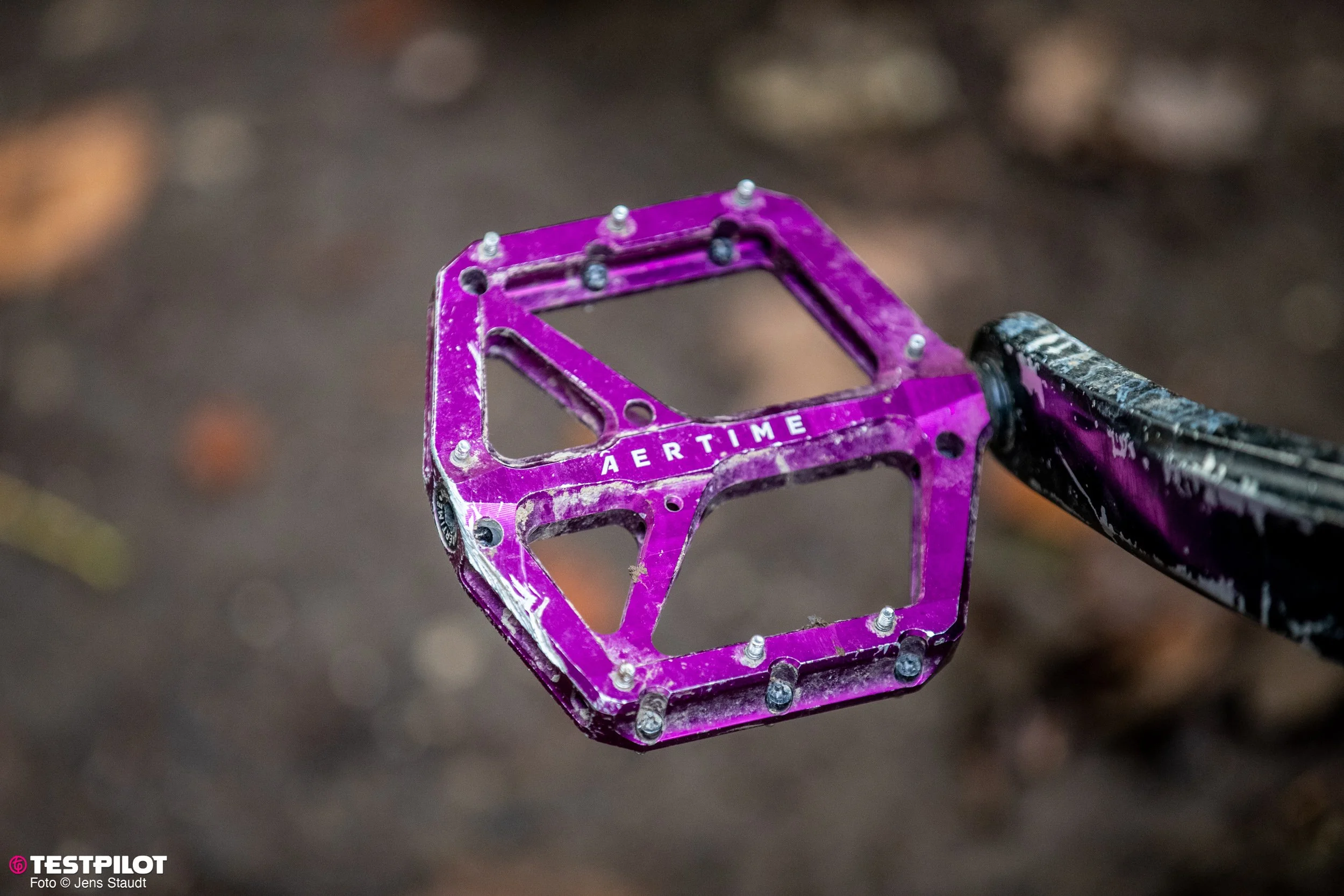
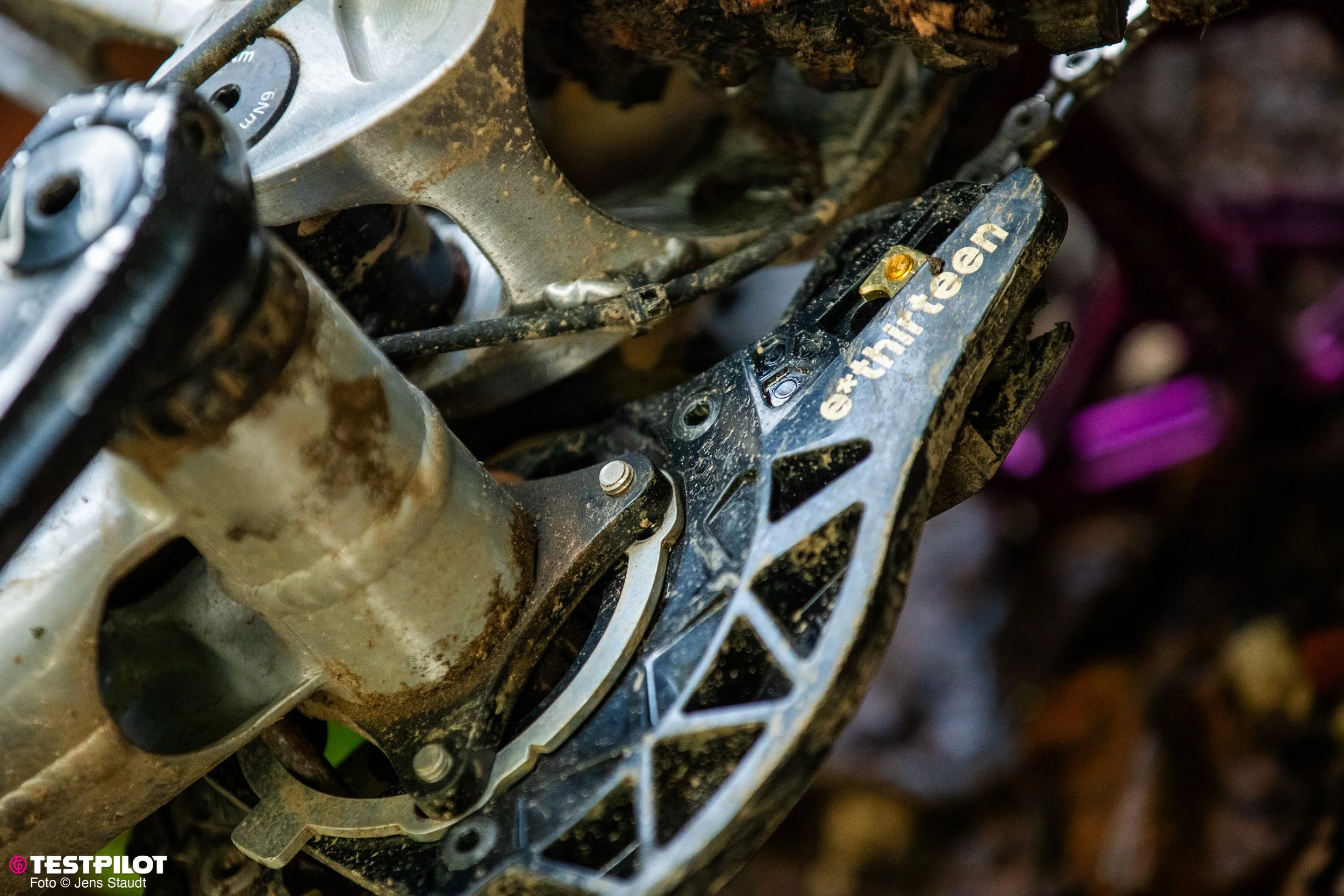
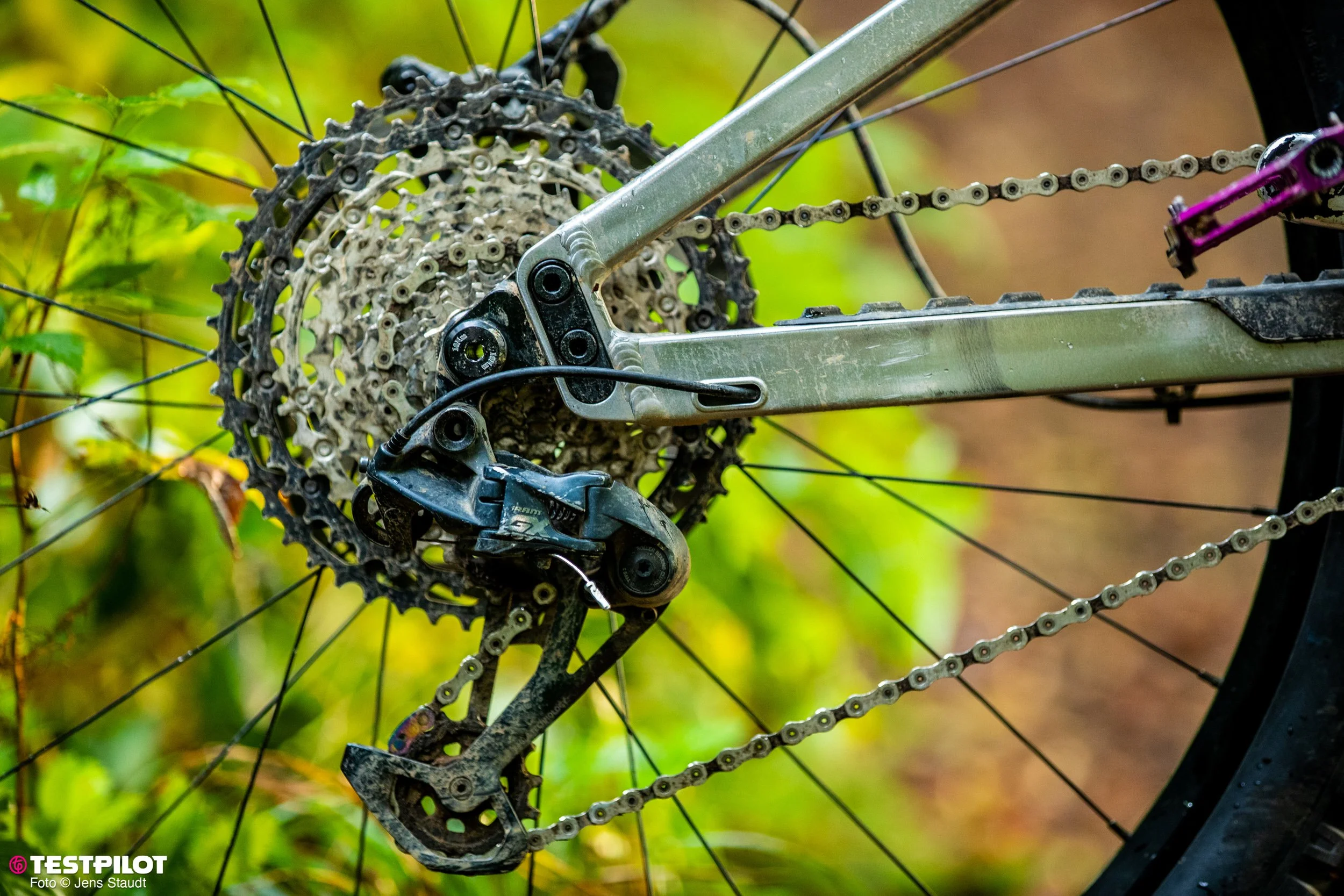

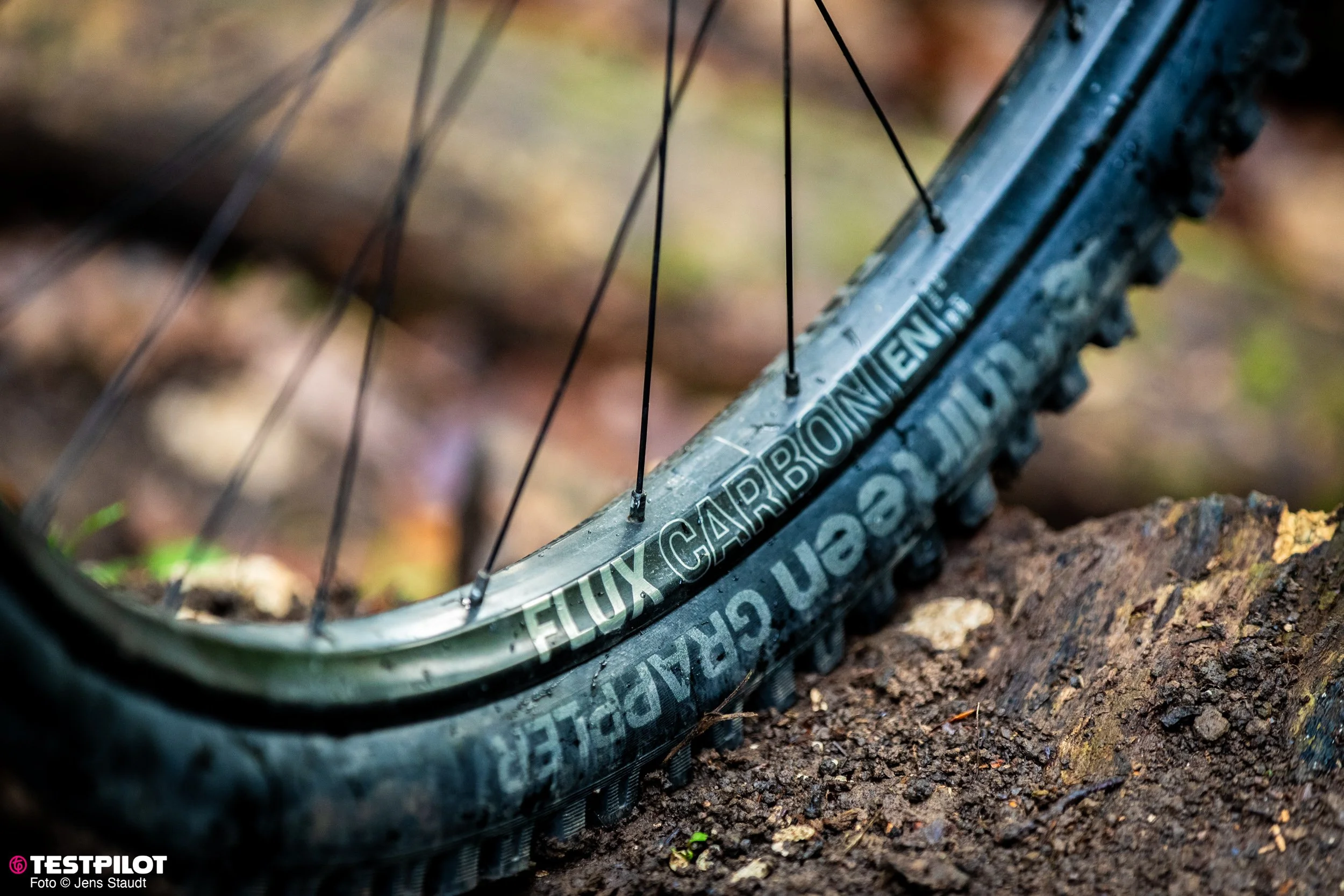
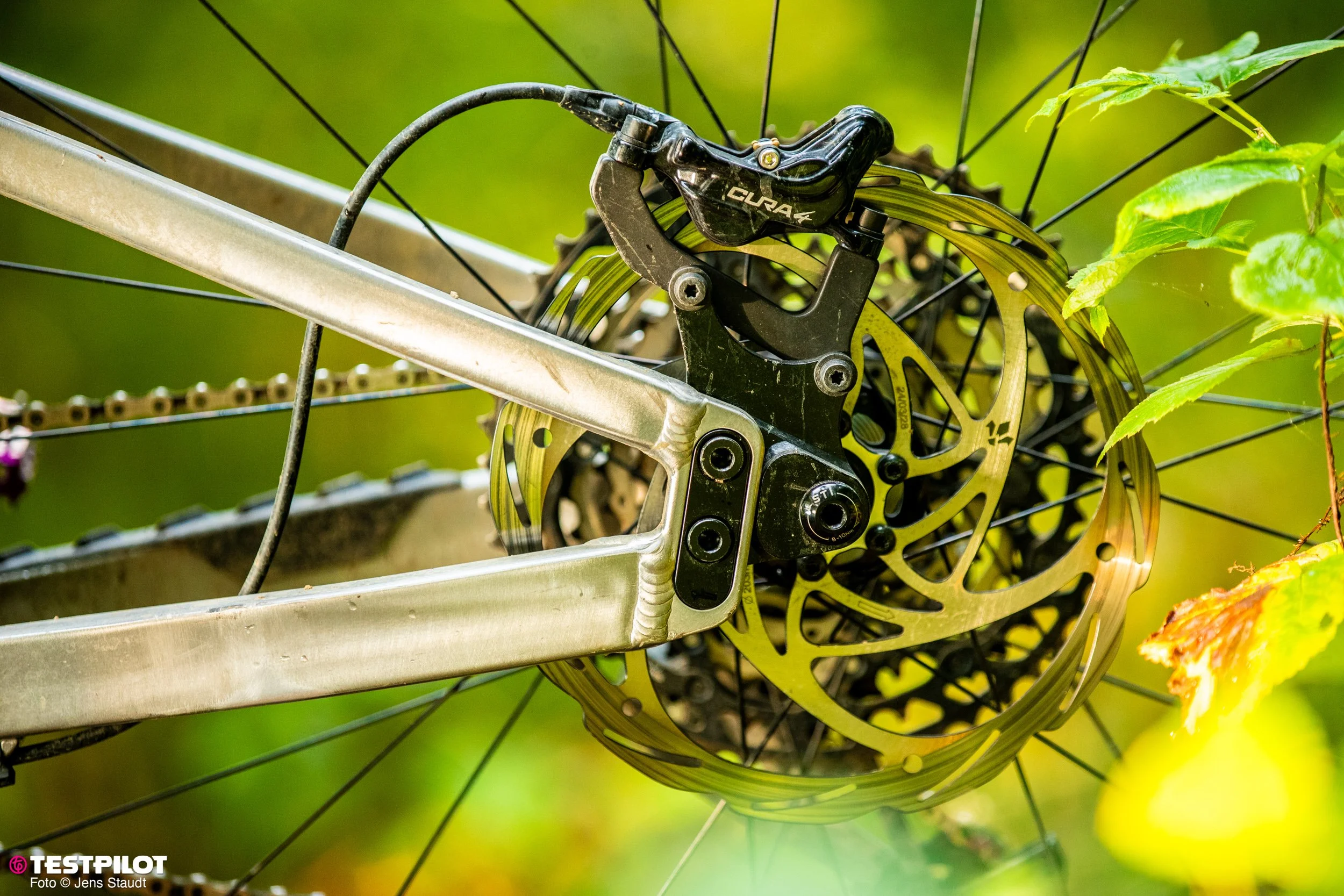
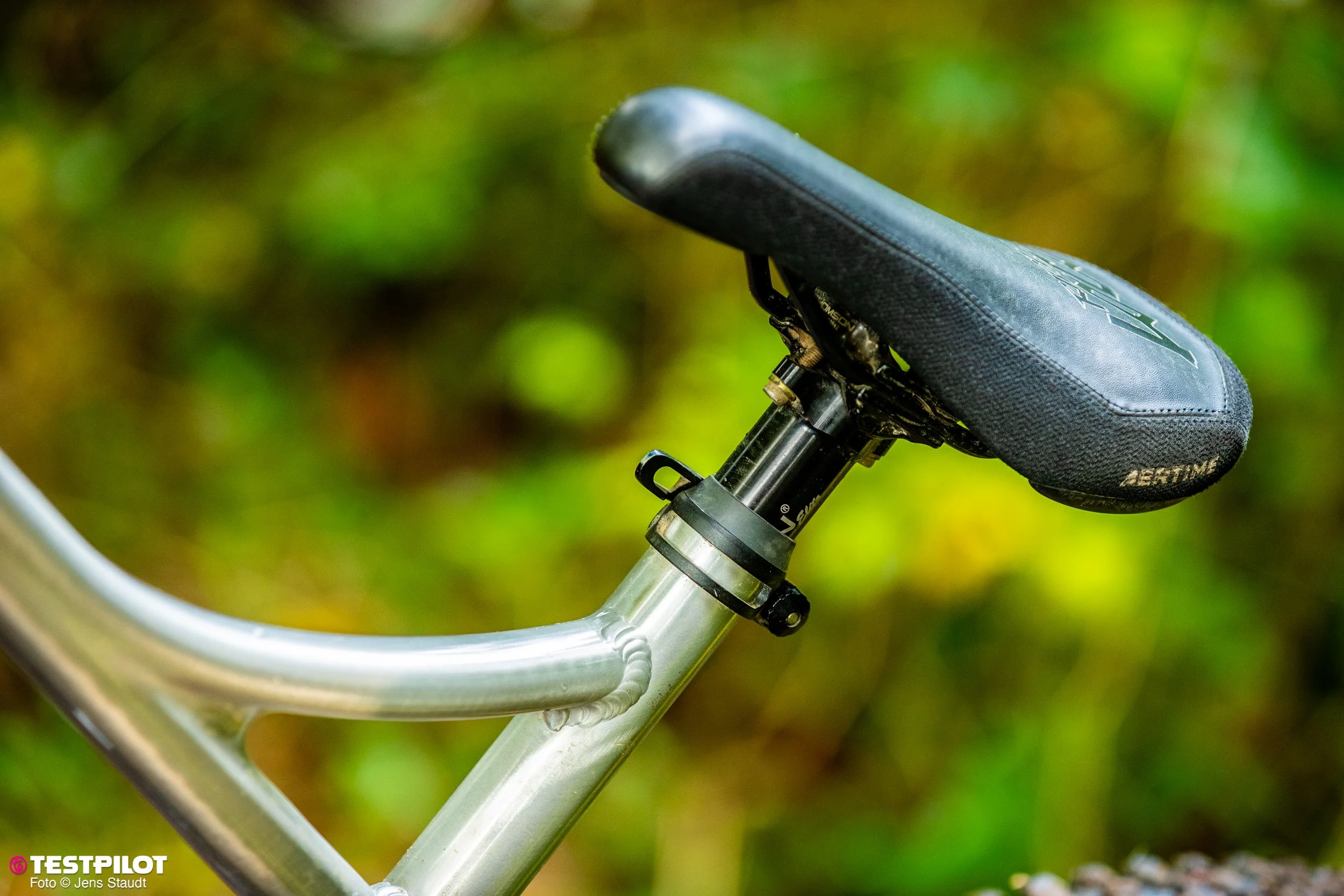

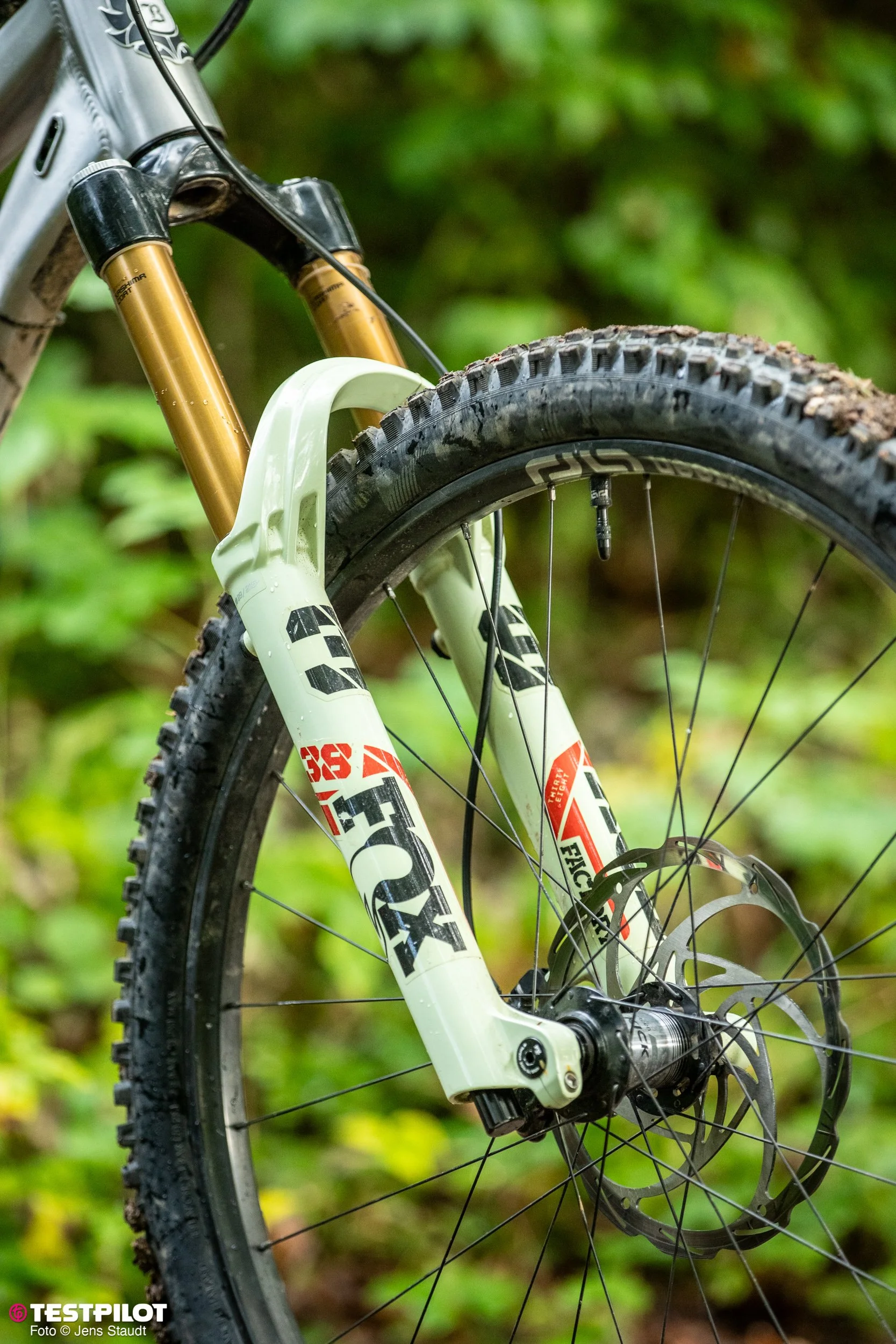
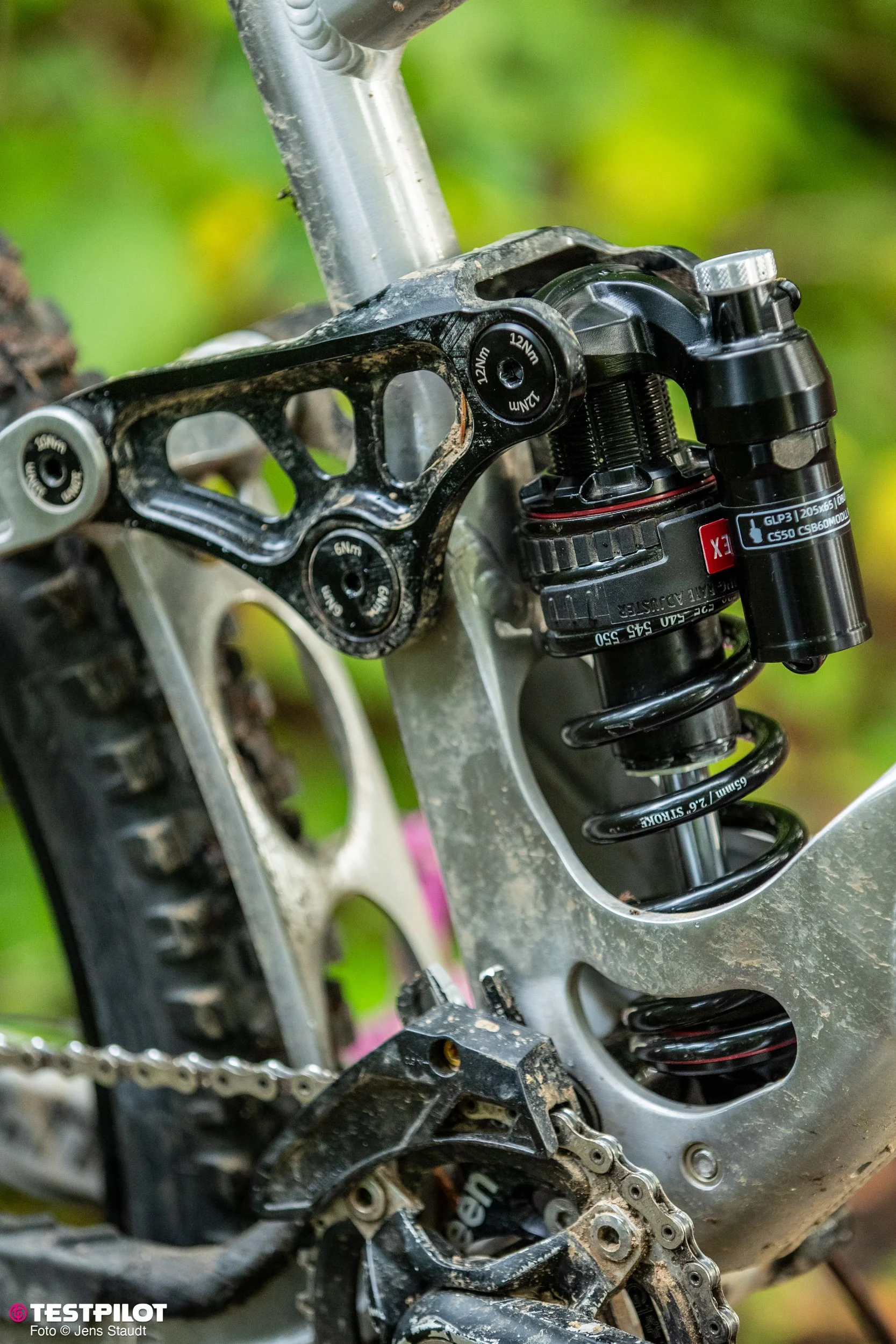

Conclusion – Banshee Titan
Banshee might not be the brand that automatically comes to mind when you’re shopping for a new bike. That’s a mistake. Their offering stands out not only with prices that, elsewhere, wouldn’t even get you half a frame. The Titan delivers a ride that sets itself apart from the crowd: predictable and forgiving, without ever feeling boring. A real workhorse! Moreover, it offers geometry that can be finely tuned—perfect for those who want to dial in every detail. An absolute hidden gem!
You want more Custom bikes?
Author – Jens Staudt
Height: 191 cm
Weight: 87 kg
Riding style: With his racing background, the lines are planned, even if there is anything bigger in his way. If possible, sections will be jumped over. You should use the entire width of a trail. Others would say - uncompromising.
Motivation: A product should function carefree and for as long as possible. If you have to screw less, you can ride more. He likes to tinker and see how the bike can be optimized.



